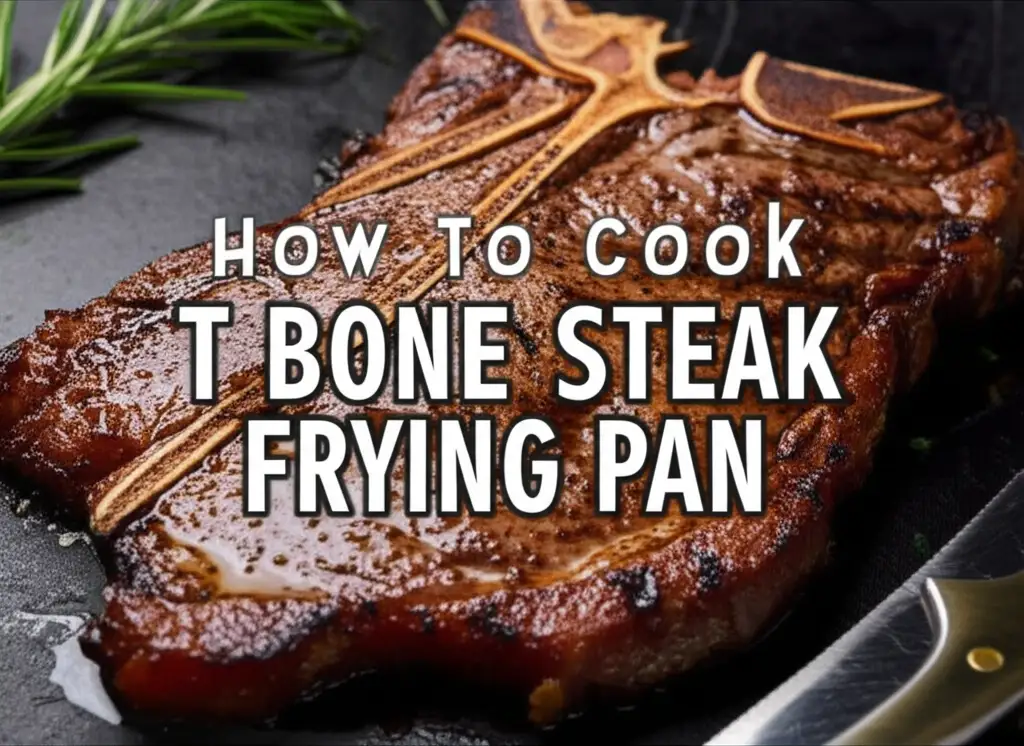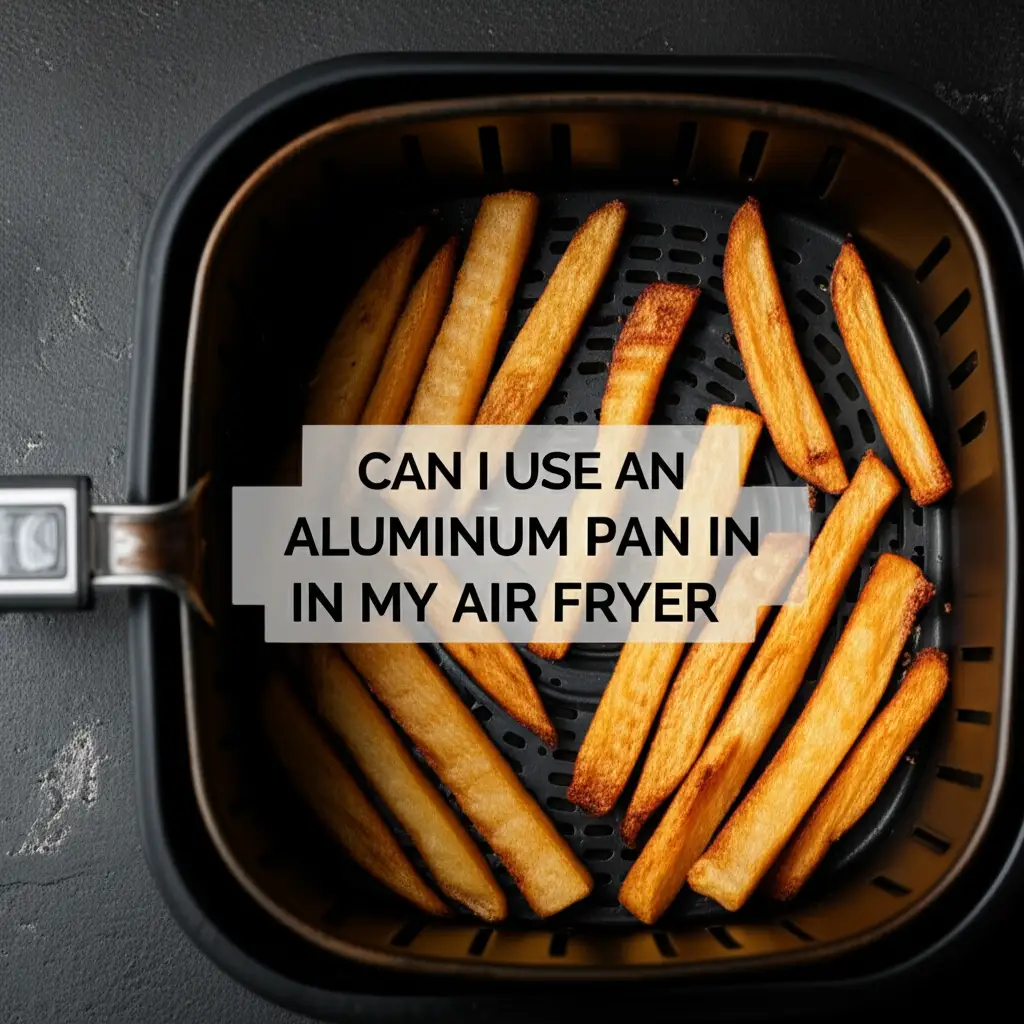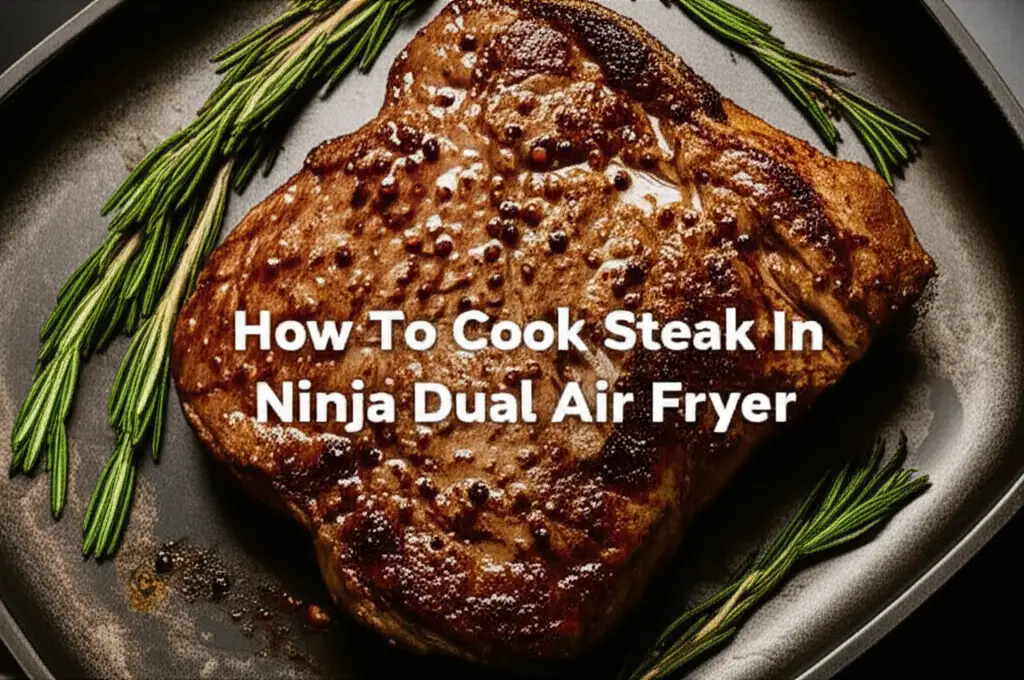· Todd Martin · Cooking Guides · 15 min read
How To Cook T Bone Steak Frying Pan

Mastering the T-Bone Steak: Frying Pan Perfection
Imagine biting into a perfectly cooked T-Bone steak. It has a beautiful, crispy crust and a tender, juicy interior. Many people think achieving this quality requires a grill or a special restaurant. However, I am here to tell you that you can easily master how to cook T Bone steak in a frying pan right in your own kitchen.
Cooking a T-Bone steak in a frying pan is a skill anyone can learn. It allows you to control the cooking process precisely. You will get amazing results with just a few simple steps and the right techniques. This guide will walk you through everything, from selecting your steak to getting that ideal resting time. We will cover choosing the best cut, preparing your steak, searing it to perfection, and even troubleshooting common issues. Get ready to impress yourself and your guests with a fantastic pan-seared T-Bone.
Takeaway
Cooking a T-Bone steak in a frying pan creates a delicious, restaurant-quality meal at home.
- Choose a thick, well-marbled T-Bone and bring it to room temperature.
- Use a heavy-bottomed pan, like cast iron, and high-smoke-point oil.
- Sear the steak on high heat to develop a rich crust.
- Cook to your desired internal temperature using a meat thermometer.
- Rest the steak properly to ensure maximum juiciness.
How to Cook T-Bone Steak in a Frying Pan
To cook a T-Bone steak in a frying pan, start with a thick, room-temperature steak. Season it well. Heat a cast iron or heavy-bottomed pan until very hot. Sear the steak for 2-3 minutes per side until a crust forms. Finish cooking, often with butter basting, until it reaches your desired internal temperature, then rest for 5-10 minutes before slicing.
Choosing Your T-Bone Steak for Frying Pan Success
Picking the right T-Bone steak is the first step to a great meal. The quality of your steak impacts the final taste and texture. Look for a steak that is at least one inch thick. Thicker steaks are easier to cook evenly and less likely to overcook quickly. A good T-Bone offers both a strip loin and a tenderloin section, separated by a T-shaped bone.
Next, examine the marbling. Marbling refers to the small flecks of fat distributed throughout the muscle. This fat melts during cooking, adding incredible flavor and juiciness to your steak. Seek out a steak with consistent, fine marbling rather than large, isolated pockets of fat. The color of the meat should be bright red. The fat should be creamy white.
Always bring your steak to room temperature before cooking. This usually means taking it out of the refrigerator for at least 30-60 minutes before you plan to cook. A cold steak hitting a hot pan will cook unevenly. The outside might burn before the inside reaches the desired doneness. Room temperature steak ensures a more consistent cook from edge to center.
Before seasoning, pat your steak very dry with paper towels. Excess moisture on the surface of the steak prevents a good sear. Moisture creates steam, which will essentially boil your steak instead of frying it. A dry surface is crucial for achieving that beautiful, crispy crust we all desire. This simple step makes a huge difference in the final product.
Essential Equipment and Preparing Your Steak for the Pan
Having the right tools makes cooking a T-Bone in a frying pan much easier. A heavy-bottomed frying pan is essential for proper heat distribution. Cast iron pans are often the top choice because they retain heat exceptionally well and create an outstanding sear. Stainless steel pans can also work, but ensure they are heavy and thick. Avoid using non-stick pans for cooking steak as they typically do not get hot enough for a proper sear and the high heat can damage their coating.
You will also need an oil with a high smoke point. Oils like grapeseed oil, avocado oil, or refined sunflower oil are excellent choices. Olive oil has a lower smoke point and can burn, giving your steak an unpleasant flavor. A good pair of tongs is necessary for flipping the steak safely and easily. Finally, a reliable meat thermometer is crucial for checking the steak’s internal temperature and ensuring perfect doneness.
Properly seasoning your T-Bone steak is vital for flavor. I prefer a generous amount of coarse sea salt and freshly cracked black pepper. Season the steak on all sides, ensuring full coverage. You can add other seasonings like garlic powder or onion powder if you like. However, a good quality T-Bone often shines with just salt and pepper, letting the beef flavor truly come through.
Allow the seasonings to sit on the steak for a few minutes before cooking. This helps the flavors penetrate the meat. Some chefs even salt their steak hours in advance, a process called dry brining, which can lead to an even juicier outcome. This step pulls moisture out, then reabsorbs it, making the steak more tender and flavorful. Always remember, the preparation before cooking is just as important as the cooking itself.
The Art of the Perfect Pan Sear
The sear is the crust you create on the outside of your T-Bone steak. It locks in juices and adds deep, caramelized flavor. Achieving a great sear starts with getting your frying pan screaming hot. Place your cast iron or heavy-bottomed pan on high heat. Let it preheat for several minutes until you see a faint wisp of smoke. This high heat is crucial for forming that delicious crust quickly.
Once the pan is hot, add your high-smoke-point oil. Just enough to coat the bottom of the pan is sufficient. Swirl it around to distribute the oil evenly. Then, carefully place your seasoned T-Bone steak into the hot pan. You should hear a satisfying sizzle immediately. This sound indicates the pan is hot enough and the searing process has begun.
For the initial sear, cook the steak undisturbed for 2-3 minutes per side. Resist the urge to move or flip the steak too often during this stage. You want to allow a dark, golden-brown crust to form. Once you flip it, sear the other side for another 2-3 minutes. This initial high-heat sear creates the Maillard reaction, which is responsible for the complex flavors and appealing color.
After the initial sear, reduce the heat to medium. At this point, you can add butter, garlic cloves, and fresh herbs like rosemary or thyme to the pan. Tilt the pan slightly and use a spoon to baste the steak with the melted butter and aromatics. Continuously spoon the hot, flavored butter over the steak for a few minutes. This infuses the steak with incredible flavor and helps to cook it evenly while keeping it moist. Many famous chefs, including Gordon Ramsay, use this method for T-Bone steak.
Achieving Ideal Doneness and Internal Temperature
Knowing when your T-Bone steak is done is key to enjoying it exactly as you like. The most accurate way to check doneness is by using a meat thermometer. Visual cues or the “touch test” can be misleading, especially with a thick cut like a T-Bone. Insert the thermometer into the thickest part of the steak, avoiding the bone, to get a precise reading.
Here is a general guide for internal temperatures for different doneness levels:
- Rare: 120-125°F (49-52°C) - Very red center, cool.
- Medium-Rare: 130-135°F (54-57°C) - Red center, warm. This is often considered the ideal doneness for T-Bone to maximize tenderness and juiciness. If you want to know how to cook steak on frying pan medium rare, aim for this range.
- Medium: 135-140°F (57-60°C) - Pink center.
- Medium-Well: 140-145°F (60-63°C) - Slightly pink center.
- Well-Done: 150°F+ (66°C+) - Little to no pink, firm.
Remember that the steak’s internal temperature will rise by 5-10 degrees Fahrenheit (2-5 degrees Celsius) during resting. This is called carryover cooking. So, remove your steak from the heat a few degrees below your target temperature. For example, if you want medium-rare at 135°F, pull it off the heat when it reads around 130°F.
For very thick T-Bone steaks (over 1.5 inches), searing on the stovetop might not be enough to cook the center without overcooking the exterior. In such cases, you can finish the steak in the oven. After searing both sides in the hot frying pan, transfer the entire pan (ensure your frying pan can go in the oven) to a preheated oven at 375-400°F (190-200°C). Cook until it reaches your desired internal temperature. This method ensures an even cook from edge to center.
The Critical Step of Resting Your T-Bone
Resting your T-Bone steak after cooking is not optional; it is absolutely crucial. This step is just as important as the actual cooking process for achieving a juicy, tender steak. When meat cooks, its muscle fibers contract, pushing the juices towards the center. If you cut into the steak immediately after removing it from the heat, all those precious juices will pour out onto your cutting board. This leaves you with a dry, less flavorful steak.
Resting allows the muscle fibers to relax. As they relax, the juices, which have been pushed to the center, redistribute evenly throughout the entire steak. This results in every bite being consistently tender and incredibly juicy. Without proper resting, even a perfectly cooked steak can taste dry and disappointing. Do not skip this vital step.
The ideal resting time for a T-Bone steak depends on its thickness and size. For a standard 1 to 1.5-inch thick T-Bone, I recommend resting it for at least 5-10 minutes. For larger, thicker cuts, you might need up to 15 minutes. A good rule of thumb is to rest the steak for about half the time it took to cook. This ensures sufficient time for the juices to settle.
To rest your steak, transfer it from the hot frying pan to a cutting board. You can loosely tent it with aluminum foil. This helps to retain heat, keeping the steak warm while it rests. Do not wrap it tightly, as this can steam the steak and soften the crust you worked so hard to create. While the steak rests, you can prepare any finishing touches or side dishes. Your patience will be greatly rewarded with a superior steak experience.
Flavor Enhancements and Serving Your T-Bone
A perfectly cooked T-Bone steak is delicious on its own, but a few additions can elevate its flavor even further. One popular enhancement is adding a compound butter. A compound butter is simply butter mixed with herbs, garlic, or other seasonings. You can prepare it in advance and keep it in the fridge. Place a slice of compound butter on top of the hot, rested steak. The butter will slowly melt over the warm meat, adding a rich, aromatic finish.
Beyond compound butter, consider a simple pan sauce. After removing your steak to rest, you can deglaze the pan with a splash of red wine, beef broth, or even a little water. Scrape up all those flavorful browned bits from the bottom of the pan. Reduce the liquid slightly, then stir in a knob of cold butter for richness. This creates a quick, delicious sauce to drizzle over your steak. For a brighter touch, a squeeze of fresh lemon juice at the end can cut through the richness.
Serving your T-Bone steak with complementary side dishes makes for a complete meal. Classic pairings include mashed potatoes, roasted asparagus, creamed spinach, or a simple green salad. The richness of the steak pairs well with fresh or slightly acidic sides. A robust red wine also complements a T-Bone perfectly.
When you are ready to serve, slice the steak against the grain. This is important for tenderness. The T-Bone offers two distinct cuts: the tenderloin (the smaller, more tender side) and the strip loin (the larger, chewier side). You can slice them separately for different textures. Arrange the slices attractively on a plate. A final sprinkle of flaky sea salt just before serving can truly make the flavors pop.
Troubleshooting Common T-Bone Frying Pan Mistakes
Even experienced cooks can encounter challenges when pan-searing a T-Bone. Knowing common pitfalls helps you avoid them. One frequent mistake is not heating the pan enough before adding the steak. If the pan is not screaming hot, you will not get that crucial, deep sear. Instead, the steak will cook slowly and might steam, resulting in a grayish crust rather than a rich, brown one. Always allow your pan several minutes to get very hot before you start cooking.
Another common error is overcrowding the pan. If you try to cook too many steaks at once, the pan’s temperature will drop significantly. This leads to the same problem: steaming instead of searing. Cook steaks one at a time, or in batches, ensuring there is enough space between them for proper airflow. This allows the pan to maintain its high heat, guaranteeing a great crust on each piece.
Not patting the steak dry enough before cooking is a simple but impactful mistake. Any moisture on the surface of the steak will turn into steam when it hits the hot pan. This prevents browning and creates a less appealing texture. Always use paper towels to thoroughly dry your T-Bone on all sides before seasoning. This ensures a direct, efficient sear that forms a beautiful crust.
Cutting into the steak too soon after cooking is a mistake that leads to lost juices. As discussed earlier, resting your steak is vital. If you slice it immediately, the juices, which have rushed to the center, will spill out. This leaves you with a drier steak. Always allow at least 5-10 minutes for your T-Bone to rest, preferably tented loosely with foil, before slicing and serving. Patience truly makes a difference.
Overcooking the steak is a significant disappointment. A T-Bone is a premium cut, and overcooking it can make it tough and dry. This is why a meat thermometer is your best friend. Relying on cooking time alone can be inaccurate due to variations in steak thickness and stove heat. Always check the internal temperature, and remember carryover cooking. Pull the steak off the heat a few degrees before your target doneness to account for the rise in temperature during resting.
FAQ Section
How long does it take to cook a T-Bone steak in a frying pan?
The cooking time for a T-Bone steak in a frying pan varies based on thickness and desired doneness. For a 1-inch thick T-Bone, plan for about 8-12 minutes total cooking time for medium-rare, including searing and finishing. Thicker steaks may take longer or require finishing in the oven. Always use a meat thermometer for accuracy.
What is the best type of frying pan for T-Bone steak?
A cast iron frying pan is the best type for cooking T-Bone steak. It retains heat exceptionally well and distributes it evenly, which is crucial for achieving a deep, even sear. Heavy-bottomed stainless steel pans are also a good option. Avoid non-stick pans, as they typically do not reach the high temperatures needed for proper searing.
How do you know when a T-Bone steak is done?
The most reliable way to know when a T-Bone steak is done is by checking its internal temperature with a meat thermometer. For medium-rare, aim for 130-135°F (54-57°C). Remember to remove the steak from the heat a few degrees before your target temperature to account for carryover cooking during resting.
Should I use butter or oil when cooking T-Bone steak?
It’s best to start with an oil that has a high smoke point, like grapeseed or avocado oil, for the initial high-heat searing. After the steak has seared for a few minutes and the heat is reduced, you can add butter along with aromatics like garlic and herbs. Basting the steak with this melted butter adds tremendous flavor and richness.
Can I cook a T-Bone steak from frozen in a frying pan?
Yes, you can cook a T-Bone steak from frozen in a frying pan, but the process differs. You will need to sear it directly from frozen on high heat for longer to create a crust. Then, transfer it to a preheated oven to finish cooking slowly and evenly. This method takes more time than cooking a thawed steak.
Conclusion
Cooking a T-Bone steak in a frying pan is a skill that delivers impressive results right in your home kitchen. You now have the knowledge to select the perfect cut, prepare it properly, and master the art of the pan sear. Remember, simple steps like bringing the steak to room temperature, patting it dry, and using a hot pan are foundational to success. The importance of resting your T-Bone steak cannot be overstated, as it ensures every bite is as juicy and tender as possible.
Embrace the process, and do not be afraid to experiment with different seasonings or finishing touches. Whether you prefer your T-Bone medium-rare or another doneness, a meat thermometer will be your best friend in achieving precision. You truly can achieve restaurant-quality T-Bone steak in a frying pan. So, grab your favorite pan, choose a beautiful T-Bone, and get ready to enjoy a truly magnificent meal. Your culinary adventure with the T-Bone awaits.





